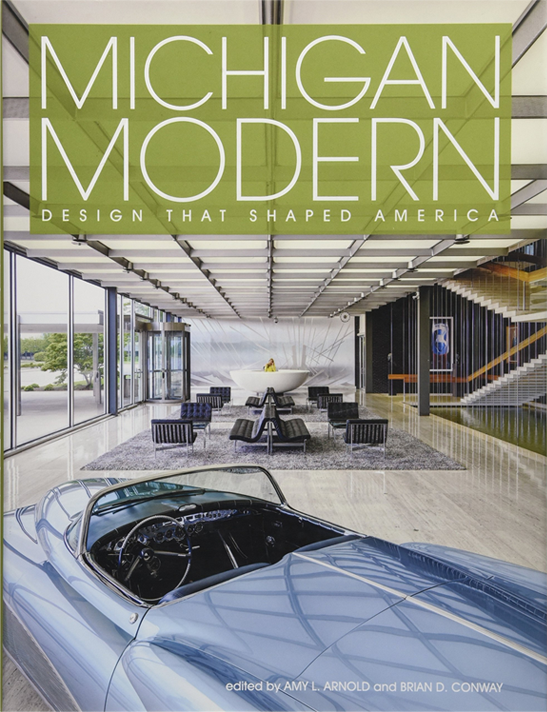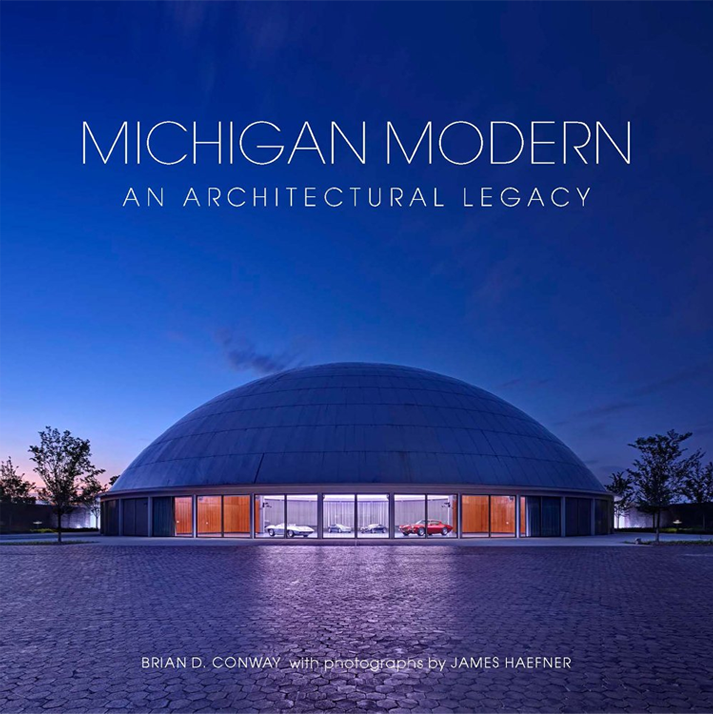Architects
Joseph N. DeLauro
DeLauro, a sculptor, served as director of the School of Visual Arts at the University of Windsor and also taught at Marygrove College and the University of Detroit Mercy.
Marshall Fredericks
Fredricks was a student of the Swedish sculptor Carl Milles and taught at the Cranbrook Academy of Art from 1932–42. He produced a large body of public art including Belle Isle’s Barbour Memorial Fountain (1936) in Detroit. His work is known nationwide.
Giffels & Rossetti
Raymond Giffels worked for architect Albert Kahn before forming Giffels & Vallet in the 1920s. He partnered with Louis Rossetti, Sr. in 1928. Notable examples of their work in the Detroit area are the Jeffersonian Apartments (1965) and Federal Mogul building in Southfield (1966).
Cass Gilbert, Jr. and Francis J. Keally
Cass Gibert, Jr., was the son of Cass Gilbert, the New York-based architect of the Detroit Public Library (1912). The younger Gilbert worked on many of his father’s projects, and Keally worked with Cass Gilbert’s firm between 1919–28. The two collaborated on the 1963 addition to the Detroit Public Library.
Nathan Johnson
One of the nation’s leading African American architects, the Kansasborn Johnson established his Detroit practice in 1956. His addition to the Second Baptist Church in Detroit was his first major project. He also designed the Detroit People Mover stations (1987).
Albert Kahn Associates
Albert Kahn began his practice in 1895 and became the architect for automaker Henry Ford, designing dozens of factory buildings. The River Rouge Glass Plant (1922) in Detroit and the Warren Tank Arsenal (1940) are cited as inspiring Modernism. Kahn’s work was a foundation for the creation of the International style. After Kahn’s death in 1942 the firm continued designing some of the Detroit area’s outstanding Modern buildings.
William E. Kapp
Kapp studied at the University of Pennsylvania. He worked as a designer for Smith, Hinchman & Grylls from 1918–31. He is known for Meadowbrook Hall (1929) near Rochester, Michigan, the University of Michigan’s Horace H. Rackham School of Graduate Studies (1938) and the McMath Planetarium (1955) at Cranbrook Academy of Art in Bloomfield Hills.
Carl Milles
This Swedish sculptor was invited in 1931 to become artist-inresidence at the Cranbrook Academy of Art in Bloomfield Hills. His most notable works include the Orpheus fountains (1934) in Stockholm, Sweden and at Cranbrook.
O’Dell, Hewlett, & Luckenbach Associates
Detroit native Augustus O’Dell partnered with Wirt Rowland, the designer of Detroit’s Guardian Building, from 1932–38. Owen Luckenbach once worked for Smith, Hinchman and Grylls. After joining Thomas Hewlett, this Birmingham, Michigan-based firm designed many Modern buildings in the Detroit area.
Millard Sheets
Sheets was a prolific Southern California painter and architect. One of his most well-known works is the Word of Life mosaic (1963) on the facade of the Hesburgh Library at the University of Notre Dame.
Eberle M. Smith Associates
Smith began his career with Albert Kahn Associates and established his own firm in 1942. He became nationally known for his progressive, student-centered school designs. In Michigan, Smith designed Edsel Ford High School (1955) and Henry Ford Community College (1961) in Dearborn and Lincoln Park and Flint High Schools (1960).
Smith, Hinchman & Grylls
Smith, Hinchman & Grylls’ origins date to 1853. The firm’s preWorld War II work includes Detroit’s most notable Art Deco skyscrapers. In the mid-1940s the firm turned to contemporary designs, assisted by its chief designer, Minoru Yamasaki. The firm continues to operate as the SmithGroup.
J. Robert F. Swanson
With Eliel and Eero Saarinen, Swanson was a principal in Bloomfield Hills-based Saarinen, Swanson & Saarinen before founding his own firm in 1947. Swanson Associates designed the University of Michigan’s Art and Architecture Building in 1974.
Frank Lloyd Wright
One of America’s greatest architects, Wright created the Prairie style. In the early 1950s he designed ‘Usonian Automatic’ houses— buildings of modest size that could easily and affordably be assembled on-site from prefabricated materials.
Minoru Yamasaki & Associates
Minoru Yamasaki, a Japanese immigrant from Seattle, came to Detroit in 1945 to become chief of design for Smith, Hinchman & Grylls. He founded his own practice in Troy in 1959. He is most well known for the World Trade Center (1971) in New York City. The Federal Reserve Bank of Chicago, Detroit Branch Annex (1949–51) designed by Yamasaki was Detroit’s first curtain wall building, leading the way for other Modern buildings.


Available at your local book store and online.
Michigan Modern in Print
“Great historical review of the much under- appreciated Detroit/ Midland area Architects and designers. Written by extremely knowledgeable writers.”
The Great Lakes State has always been known for its contributions to twentieth-century manufacturing, but it’s only beginning to receive wide attention for its contributions to Modern design and architecture.
